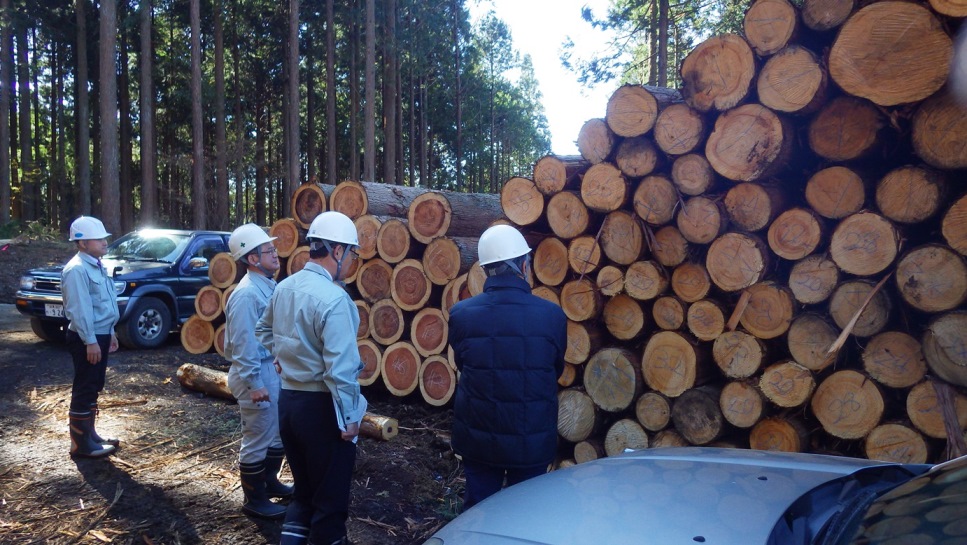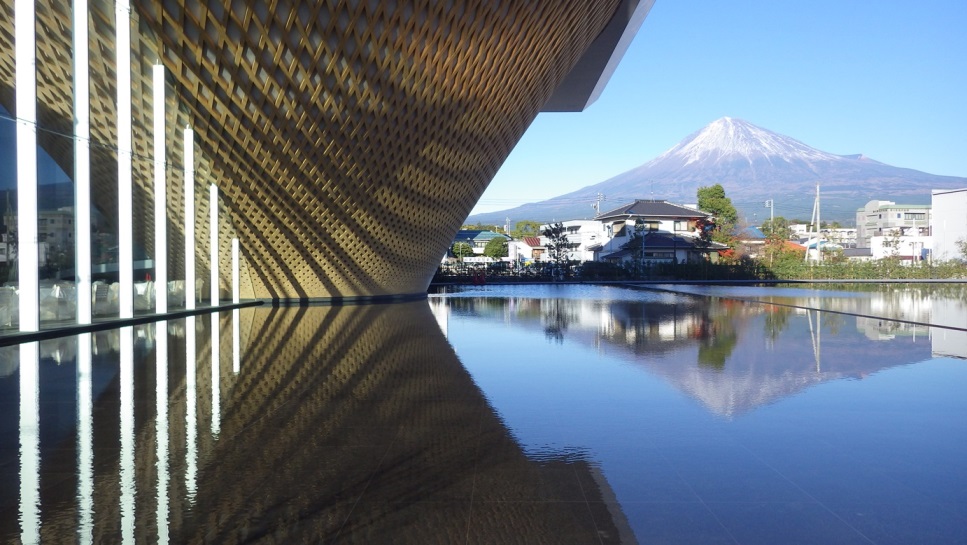Press ReleasesNippon Paper Industries and Nippon Paper Lumber Provide the SGEC-Certified Wood (Japanese Cypress) from Kitayama Company-Owned Forest at the Foot of Mt. Fuji to "the Exhibition Building Wooden Grid Project of Mt. Fuji World Heritage Centre, Shizuoka"
Nippon Paper Industries Co., Ltd.
Nippon Paper Lumber Co., Ltd.
Nippon Paper Industries Co., Ltd. (President: Fumio Manoshiro; hereinafter "Nippon Paper Industries") and Nippon Paper Lumber Co., Ltd. (President: Haruo Fujisawa; hereinafter "Nippon Paper Lumber") are pleased to announce the provision of the SGEC-certified wood (Japanese cypress) from Kitayama company-owned forest (Fujinomiya City, Shizuoka Prefecture; approximately 680 hectares) at the foot of Mt. Fuji to the Exhibition Building Wooden Grid Project of Mt. Fuji World Heritage Centre, Shizuoka (Fujinomiya City, Shizuoka Prefecture; hereinafter "World Heritage Centre").
The Kitayama forest is Japan's first forest to be certified by the "SGEC (Sustainable Green Ecosystem Council)", which was established as a unique Japanese forest certification system. Nippon Paper Lumber, Japan's first company to receive CoC certification from the SGEC, was involved in the forest management and managed the wood segregation throughout its distribution processes, which led to the success in the delivery of the SGEC-certified wood from the mountain to the building.


Log yard in the Kitayama forest Wooden grid at the World Heritage Centre
The World Heritage Centre was built in response to the registration of Mt. Fuji as a world cultural heritage of the United Nations Educational, Scientific and Cultural Organization (UNESCO). Its exhibition building is a characteristic design of the architect Shigeru Ban, which has a wall in the motif of an inverted image of Mt. Fuji reflected in a basin filled with water from a spring on Mt. Fuji (to be opened on December 23).
The wooden grids in the shape of an inverted cone are made of Japanese cypress, which is the main tree species in the local mountain forest including Kitayama forest, and they are made of SGEC-certified wood only. Because of this, the world Heritage Centre was recognized as "an architectural structure using certified wood" and received Japan's first "SGEC/PEFC CoC Project Certificate" for local collaboration and cross-industrial cooperation such as forestry, processing/distribution, and construction on July 18.
Our group owns approximately 90 thousand hectares of forest in Japan, including Kitayama forest, and has sustained the cycle of planting, nurturing, thinning, and harvesting in a planned manner for many years, and has been promoting sustainable forest management. Under the slogan "Shaping the Future with Trees," we will continue to work collaboratively with the local communities to promote the value of wood and contribute to the development of a recycling-based society.
*Forest certification
This is a system where an independent third party institute certifies a forest that is managed appropriately based on a certain level of standards from the three aspects of environment, economy, and society. Distributing the wood and wood products produced from these forests with a label attached promotes selective purchase by consumers and helps sustainable forest management. The PEFC is one of the international forest certification systems. The SGEC acts as a Japanese version of the forest certification system and made an agreement with the PEFC for mutual approval last year.